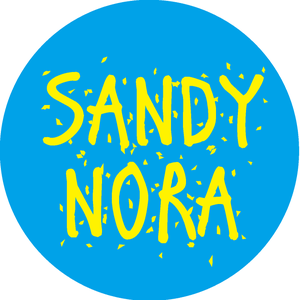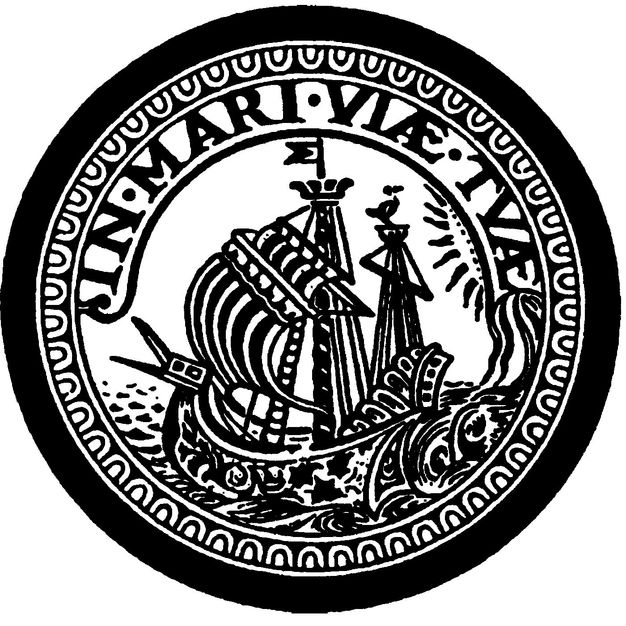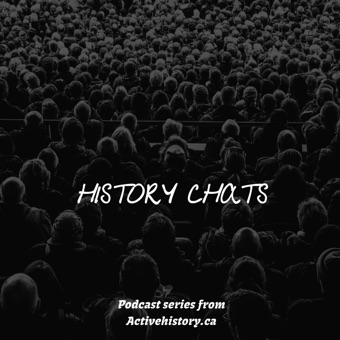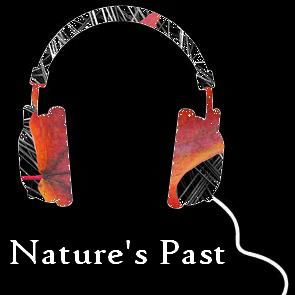
History Slam Podcast
Activehistory.ca
History Slam is a conversational podcast that features discussions and debates around various historical topics or issues relevant to the understanding of history. Whether we talk with a historian about their new book or a musician about including historical references in their songs, History Slam focuses on the stories of the past, how those stories influence us today, and their role in shaping our shared culture. Within a relaxed environment we’re going to try and have some fun with history while highlighting stories from the past. We’re always looking for new suggestions for topics and guests so any ideas or feedback can be sent to [email protected] and you can follow Sean on Twitter @drseannyfever.
- 10th Anniversary Special: Life as Historians
In this 10th Anniversary Special, Sean Graham catches up with the first 3 guests from the early days of the podcast to reflect on life as historians over the past decade. He starts by talking with Ian Milligan about his shift towards digital methodology, where he sees history going, and his advice for prospective graduate students. He then chats with Victoria Lamb Drover about how she got into administration, the benefits of being challenged in history courses, and how her studies influence her current work. From there, Aaron Boyes joins the show to reflect on his journey to the government, his conflicted feelings about grad studies, and the skills historians develop. Sean finishes the show by discussing his journey through history programs, the financial reality of historical study, and the podcast’s role in his career. He also thanks everyone who has ever listened, all the guests over the years, and the folks behind the scenes who have helped the show reach the decade mark.
To learn more about Victoria’s work, visit the Saskatchewan Indian Institute of Technologies at this link: https://siit.ca/
Check out Ian’s new book here: https://www.cambridge.org/core/elements/transformation-of-historical-research-in-the-digital-age/30DFBEAA3B753370946B7A98045CFEF4
For the full Year in Review (100 Years Later) series, follow this link: https://activehistory.ca/category/year-in-review-100-years-later/
https://media.blubrry.com/history_slam/activehistory.ca/wp-content/uploads/2022/07/History-Slam-221.mp37 July 2022, 5:58 pm - Canada’s Abortion History
Last Friday, the United States Supreme Court made its much anticipated decision in the Dobbs v. Jackson’s Women’s Health Organization case. In the majority opinion, the court overturned the 1973 Roe v. Wade decision, which ruled that the privacy clause in the U.S. Constitution protected a woman’s right to an abortion. In the week since, there have been protests across the United States in response. In Canada, there has been similar protests and great concern not only for what this will mean for Americans, but also the future of abortion rights in Canada.
In this episode of the History Slam, I talk with Robyn Schwarz to talk about the history of abortion in Canada. We discuss the legality of abortion in the late 19th century (6:06), how changes in medicine have influenced perceptions of abortion (20:10), and the history of family planning (27:10). We also chat about the lack of attention on this issue by historians (37:13) and the importance of putting abortion into its proper historical context.
For more information, you can visit Action Canada for Sexual Health & Rights’ project The 1970 Abortion Caravan: Celebrating 50 Years and Shannon Stettner’s edited collection Without Apology: Writings on Abortion in Canada.
https://media.blubrry.com/history_slam/activehistory.ca/wp-content/uploads/2022/06/History-Slam-220.mp330 June 2022, 5:40 am - Canadiana & Historical Storytelling on the Web
In this episode of the History Slam, I talk with Adam Bunch and Kyle Cucco of of the outstanding web series Canadiana, which has its Season 3 debut on Tuesday June 28. We talk about the delays to season 3 caused by Covid (3:27), how they pick topics for the show (12:07), and the benefits of filming on location (17:40). We also chat about their partnership with Parks Canada (24:09), the two-part season premiere on piracy in Canada (30:40), and the audience for Canadian history online (39:08).
Find them on Youtube: https://www.youtube.com/c/Canadiana
Follow them on social media:
Twitter: @ThisisCanadiana
Instagram: @ThisisCanadiana
You can also support them on Patreon: patreon.com/thisiscanadiana
Back in the summer of 2017, a new web series was released on YouTube. Telling viewers that they were on the hunt for the “most incredible stories in Canadian history,” Canadiana was a new type of Youtube channel. A documentary-style series, Canadiana combines archival and secondary research with outstanding visual elements to provide audiences with wonderful storytelling. And while the first season was bootstrapped by its creators, through its success in finding a big audience they have been able to secure additional funding and partnerships to expand and improve what was already a quality show. This season, for instance, the series is partnering with Parks Canada to tell some little-known stories at various national parks and historic sites.
As I look forward to the premiere of Season 3, coming on Tuesday (June 28), its success is a reminder that there is an interest in history. Despite the regular claims of Canadian history being boring and the stark reality of declining enrolments in history departments across the country, when history is done well, people want to engage. Over the past five years, the word unprecedented has been used with alarming regularity in the press (seriously, Google ‘unprecedented’ and click news and you will inundated with stories), which is fair only if you ignore the precedents. The past isn’t always prologue and certainly the very idea of history is under attack in some places, but in this environment of uncertainty, there is an appetite to look to our past and it’s critical that quality historical content be there for people to consume.
https://media.blubrry.com/history_slam/activehistory.ca/wp-content/uploads/2022/06/History-Slam-219.mp323 June 2022, 5:43 pm - Local Culture, Tourism, & PEI’s Summer Trade
After two down years, tourism is rebounding as we head into the summer. From long lines at airports to rental car shortages to sold out hotels, there is a strong, pent up demand for travel. This is welcome news to communities where hospitality is the main economic driver as employees return to work and prepare to again welcome visitors.
One such location is Prince Edward Island, which welcomed 1.6 million tourists in 2019, contributing an estimated half billion dollars to the provincial economy. The two full years since have seen drastic decreases to those numbers, but there is some optimism that this summer will bring people back in big numbers, helping restore the Island’s tourist trade, which, from its humble beginnings in the 19th century, continually expanded through the 20th century to become a key driver of the Island’s economic and cultural life.
That transition is the subject of Alan MacEachern and Edward MacDonald’s new book The Summer Trade: A History of Tourism on Prince Edward Island. Ranging from the early days of the Island’s tourism trade through the onset of the Covid-19 pandemic, the book explores how PEI has attracted tourists and how the growing tourist trade has come to influence the local culture. With seaside resorts, Anne of Green Gables attractions, and even the draw of the Confederation Bridge, MacEachern and MacDonald explore the evolution of the complicated relationship between Islanders and their visitors. In addition to the book, if you’re in Charlottetown this summer, be sure to check out the accompanying exhibition going on at the Confederation Centre of the Arts until October 9.
In this episode of the History Slam, I talk with Alan and Edward about the book. We discuss the start of the Island’s tourist trade and the impact of Confederation (6:00), how 20th century changes in transportation influenced tourism (16:00), and the symbolism of the Confederation Bridge (18:45). We also chat about the tension between tourism and local culture (25:15), the importance of Anne of Green Gables (32:50), and attracting return visitors along with the challenges of rebounding from the pandemic (39:20).
https://media.blubrry.com/history_slam/activehistory.ca/wp-content/uploads/2022/06/History-Slam-218.mp316 June 2022, 6:38 am - Storytellers, Colonialism, and Community in the Chilcotin Plateau
For every strong, thriving community, there are people actively keeping it alive at its centre. Whether that’s hosting events, checking in on others, or sharing the living memory of the place, these individuals build an environment where stories are shared and passed to the next generation. But when they’re gone, what happens to their stories? Who is there to take that central role in the community? Especially in some of Canada’s rural areas, where younger people are increasingly moving to urban centres, there is a threat to the longstanding regional cultures, stories, and histories that have tied communities together for generations.
In the Chilcotin Plateau, Sage Birchwater spent years gathering stories from those people who spent their lives building the community. With tales from their own lives as well as those that had been passed down through the generations, Birchwater preserved stories that were being lost to colonialization. And as modern technology changes how we communicate, in particular the ways people stay in touch, the opportunities to share stories have decreased – a problem further exacerbated by the pandemic.
The result of this work is Talking to the Story Keepers: Tales from the Chilcotin Plateau. In the book, Birchwater shares the stories from his decades living in the region and provides a spectacular window into the lives and cultures of its residents. The stories are wide ranging – from the trauma of residential schools on familial relationships to the seeming absurdity of a brass band playing in a church while it was being transported across a river – leaving the reader both moved and entertained. And while the book is a regional history, it speaks to issues of community building, identity, and colonialism that exist across the country.
In this episode of the History Slam, Sean Graham talks with Sage Birchwater about the book. They discuss his approach to the book and building trust with family members (6:01), the sense of community in Chilcotin (11:06), and how stories are lost to colonialization (13:29). They also chat about how stories disappear (17:31), moving a church across a river (27:26), and the national appeal of these stories (33:15).
https://media.blubrry.com/history_slam/activehistory.ca/wp-content/uploads/2022/06/History-Slam-217.mp32 June 2022, 4:41 am - Heroin & the History of Canada’s Drugs Laws & Use
In recent years, there has been no shortage of news stories on opioids and overdose deaths in Canada. What tends to be missing from these reports, however, is the historical context that shapes public understanding of these issues. The legal, social, and cultural processes that have shaped both access and perception of drugs and drug use in Canada require a critical assessment as communities across the country work towards reducing lethal outcomes.
A good source for that context comes in Susan Boyd’s new book Heroin: An Illustrated History. In tracing the history of heroin from a prescription medication to an illegal substance, Boyd explores the failure to address overdoses, arguing that criminalization and resistance to harm-reduction policies, including safe consumption sites, prevent the implementation of viable solutions. While exploring how issues of race, gender, and class create further legal and cultural inequalities, Boyd provides an outstanding overview of how the past influences contemporary perceptions of such a pressing national issue.
In this episode of the History Slam, I talk with Susan about the book. We discuss the introduction and medicinal use of heroin (10:17), prescription v. elicit heroin (14:26), and prejudice within heroin legislation (24:01). We also chat about how HIV changed public perception of heroin use (29:38), efforts to punish drug manufacturers (36:25), and supervised consumption sites (52:33).
https://media.blubrry.com/history_slam/activehistory.ca/wp-content/uploads/2022/05/History-Slam-216.mp326 May 2022, 6:42 am - Provincial Political Trends & Saskatchewan’s Transition from Left to Right

In the past two years, 7 provinces and territories have held elections, with Quebec and Ontario holding campaigns this year. And if that wasn’t enough, Jason Kenney’s resignation earliere this week further thrust provincial politics into the news. While campaigns and leadership changes generate plenty of interest, the pandemic has served as an important reminder of just how influential provincial/territorial governments are in our daily lives. At the same time, following provincial politics outside where you live, in particular during election campaigns, offers a great lens into local priorities and cultural differences across the country.
A particularly interesting trend in provincial politics has been Saskatchewan’s shift from left to right through the second half of the 20th century. The province of Tommy Douglas, who served as Premier from 1944 to 1961, had CCF and NDP premiers for the majority of the time between 1944 and 2007, with Grant Devine (1982-1991) the only Progressive Conservative premier in that era. That changed in 2007, however, when Brad Wall won the first of his three majority governments leading the Saskatchewan Party. The party won a comfortable majority again in 2020. This transition has been mirrored at the federal level, as the Conservative Party won all 14 of the province’s ridings in the 2021 election.
That shift in Saskatchewan’s political outlook is the subject of Dale Eisler’s new book From Left to Right: Saskatchewan’s Political and Economic Transformation. As the title suggests, Eisler, a long-time journalist who has also worked in the federal government, examines the causes of the province’s shift to the right of the political spectrum. From demographic changes to the transformation of agricultural industries to the economic power of energy production, the policy priorities of Saskatchewan voters have changed significantly over the last 70 years. Eisler not only traces these changes but also effectively engages with what these provincial shifts can tell us about political trends across the country.
In this episode of the History Slam, I talk with Dale Eisler about the book. We discuss Tommy Douglas’ rise to power and the generational shift that followed (10:17), the rise of rural populism in the 20th century (14:53), and how rural economic changes shaped the provincial political landscape (22:46). We also chat about the rise of the Saskatchewan Party and what has made it effective (30:15) and whether Saskatchewan politics foreshadows what happens at the federal level (36:40).You can find Dale’s other book, False Expectations, here plus more on his novel Anton and the subsequent film adaption here.
https://media.blubrry.com/history_slam/activehistory.ca/wp-content/uploads/2022/05/History-Slam-215.mp319 May 2022, 7:53 am - Indigenous Voices, Resources, & Learning in Canadian Classrooms
In its final report, the Truth and Reconciliation Commission included several Calls to Action regarding education. One of these was to develop and implement learning resources for all students in Canada so that more Indigenous voices, perspectives, and approaches were included in provincial and territorial curricula. As we’ve seen, however, some efforts to do this have not gone well. Fortunately, with better resources being made available to teachers, so many of whom are exhausted from over two years of pandemic teaching, the situation is slowly improving.
One such resource for teachers is Resurgence, a new volume edited by Christine M’Lot and Katya Adamov Ferguson. Organized using the 4-Rs – Resistance, Resilience, Restoring, and Reconnecting – it includes poetry, art, and narratives from a diverse group of Indigenous artists and writers. The book also includes resources for teachers that range from discussion questions to strategies for introducing Indigenous learning into classrooms. With material that can be used across provincial and territorial curricula and implemented in classrooms from elementary through high school, Resurgence is a terrific addition to the available educational material. Even if you’re not in an educational environment, though, you’re very likely to find plenty in the book to not only keep you interested, but to also learn/discover something new.
In this episode of the History Slam, I talk with Christine M’Lot about the book. We discuss her education background and how that influenced the project (3:45), the 4-R framework and how the book is organized (8:15), and its ability to be used across educational systems (14:14). We also chat about the editors’ learning process (22:31), how audiences can approach the material and Indigenous learning (29:03), and the benefits of meaningfully incorporating Indigenous voices into classrooms (34:42).
https://media.blubrry.com/history_slam/activehistory.ca/wp-content/uploads/2022/05/History-Slam-214.mp312 May 2022, 6:42 am - Colonial Violence, National Myths, & the Lynching of Louie Sam
On February 24, 1884, Louie Sam, a Stó:lo teenager, was accused by an angry mob of starting a fire that killed James Bell, a shopkeeper in the settler community Nooksack, in what is now Whatcom County, Washington, which borders British Columbia. Without any evidence, the assembled mob determined that Sam was responsible and, despite him being arrested by Canadian authorities, crossed the border, took him by force, and hanged him. Nobody was ever arrested for Sam’s death, which simultaneously stands a rare documented lynching in Canada as well as a powerful example of the violence associated with colonialism.
Canadian mythology reinforces the idea that Canada was, and is, a ‘peaceable kingdom.’ Louie Sam’s case leads to the question of ‘peaceable for who?’ In 2006, Washington State legislators passed a motion expressing regret and their “deepest sympathies” to Sam’s descendants over the incident, which the CBC reported as being started by two white Americans “who stirred up the mob.” Framing it as an American event ignores that the same colonial structures and racism shaped Indigenous-settler relationships on both sides of the border.
In his new book, Deadly Neighbours: A Tale of Colonialism, Cattle Feuds, Murder, and Vigilantes in the Far West. Chad Reimer explores the murder of Louie Sam, putting into a broader societal context and challenging the notion that it was a foreign event. In examining the wider colonial environment that surrounded the events of that February night, Reimer is able to provide tremendous depth to his analysis of the murder as well as how it can help us re-examine some of the main themes, narratives, and myths that have long shaped Canadian history.
In this episode of the History Slam, I talk with Chad Reimer about the book. We discuss the existing tensions in the region at the time of the murder and the way Canadians have long thought of colonialism (8:59) as well as the challenge of wading through colonial documents to try and find an accurate representation of what happened (11:55). We also chat about how the violence was about so much more than Louie Sam’s alleged crime (19:40), settlers being conscious of colonialism (25:45), and connecting local stories to broader national narratives (30:34).
https://media.blubrry.com/history_slam/activehistory.ca/wp-content/uploads/2022/05/History-Slam-212.mp36 May 2022, 9:29 pm - Bernie Langille’s Death and the Long Journey Towards Truth, Healing, & Trust
On a cold February night in 1968, Bernie Langille drove his friends to play darts and have a drink at CFB Gagetown. The next morning, his wife found him bloody and bruised in bed without knowing what happened. He was taken to the base’s hospital where it was recommended he be flown to Halifax for immediate treatment. After a 4-hour delay in ordering the flight, an assault by one of the doctors, and his ambulance being in a collision with a train, he finally made it to the hospital in Halifax, but it was too late. The rather unusual circumstances of Langille’s death led to many questions for his family and speculation by the community. Over 50 years later, the deep pain remains for the Langille family and has led Bernie Langille’s grandson – also named Bernie – to revisit his grandfather’s death in a search for truth and healing.
This journey is profiled in Bernie Langille Wants to Know What Happened to Bernie Langille, a new documentary by director Jackie Torrens and her team at Peep Media. Following the junior Langille, the film highlights both the challenge of finding the truth along with the family’s struggle to come to terms with not only what happened, but their own stories of that night. As those stories are challenged by new information, the viewer is left to contemplate questions of truth and trust and how the unknown can wreak havoc on our relationships.
The film also relies on remarkable recreations of that night in 1968 using miniature figures. This allowed Torrens and her team to beautifully inform the audience while also visually representing the fragments of information the family had access to through years. Not so much a whodunnit, but, as Torrens says, a whatdunnit, the film explores the generational pain of a traumatic event and the various ways a family has tried to cope.
In this episode of the History Slam, I talk with Jackie Torrens about the film. We discuss the hard to believe elements of Langille’s death (9:42), the emotional toll of challenging the family’s memories and ‘truth’ (13:37), and the decision to present new information to Bernie on camera (18:20). We also chat about some of the incredible documentation they found (23:43), doing recreations in miniature and the resulting challenges in filming (33:39), and managing audience expectations in a true crime documentary (37:10).
Bernie Langille Wants to Know What Happened to Bernie Langille has its World Premiere on Saturday April 30 at 8:30 at TIFF Bell Lightbox 4 as part of Hot Docs. You can also watch online from anywhere in Canada for 5 days starting May 1
https://media.blubrry.com/history_slam/activehistory.ca/wp-content/uploads/2022/04/History-Slam-213.mp328 April 2022, 6:05 am - Marcel Marceau, Movement, & the Art of Silence
In 2022, mime is probably not what you think of when discussing popular culture. The image of an individual with their face painted white, probably acting like they are trapped in a box, doesn’t demand attention within the ever-so-crowded cultural landscape. At the same time, however, the idea of movement as medicine remains popular. For many of its practitioners, mime, for all its potential performative artistry, is about the movement and the benefits that come from it. This includes a mime who, following Parkinson’s diagnosis, is using mime techniques to combat symptoms while also teaching other patients.
That level of depth in the meaning and power of mime were on full display throughout Marcel Marceau’s life. Arguably the world’s most famous mime – even after his 2007 death – Marceau’s career spanned the entirety of the second half of the 20th century. Marceau survived the Second World War and occupation of France, helping Jewish children escape Nazi occupation, but his father was killed in the Holocaust. The experiences of those years shaped the rest of his life, during which he was committed to peace and bringing love to communities through his performance.
This is the subject of The Art of Silence, a new documentary that is debuting as part of Hot Docs Festival in Toronto. Profiling the life of Marcel Marceau, director Maurizius Staerkle Drux follows the famed mime’s path to the stage, demonstrating how his early life influenced his approach to his life and career. Seeking to spread happiness around the world through his performances, his remarkable ability to connect with others, both on and off stage, left an incredible mark on those he touched. The films tells this story through the voices of those people, from his family to those who continue to be inspired by his art. Totally different from what I expected, the film shows the power of silence and the importance of appreciating the humanity within us all.
In this episode of the History Slam, I talk with director Maurizius Staerkle Drux about the film. We discuss why Marcel Marceau made a compelling figure for a documentary (4:18), Marceau’s survival of the Holocaust (8:52), and the family’s inclusion in the project (12:32). We also chat about the state of mime today and its healing benefits (15:12), Marceau’s push to create good through his performances (20:22), and the power of silence (25:16).
*The Art of Silence is debuting as part of Hot Docs in Toronto, showing at 2:45 on Monday May 2 and 8:30 on Sunday May 8. The film can also be streamed in Canada for five days starting May 3.
https://media.blubrry.com/history_slam/activehistory.ca/wp-content/uploads/2022/04/History-Slam-211.mp321 April 2022, 2:19 pm - More Episodes? Get the App
Your feedback is valuable to us. Should you encounter any bugs, glitches, lack of functionality or other problems, please email us on [email protected] or join Moon.FM Telegram Group where you can talk directly to the dev team who are happy to answer any queries.
 Safe Space
Safe Space
 Sandy and Nora talk politics
Sandy and Nora talk politics
 Witness to Yesterday (The Champlain Society Podcast on Canadian History)
Witness to Yesterday (The Champlain Society Podcast on Canadian History)
 History Chats
History Chats
 Nature's Past: A Podcast of the Network in Canadian History and Environment
Nature's Past: A Podcast of the Network in Canadian History and Environment